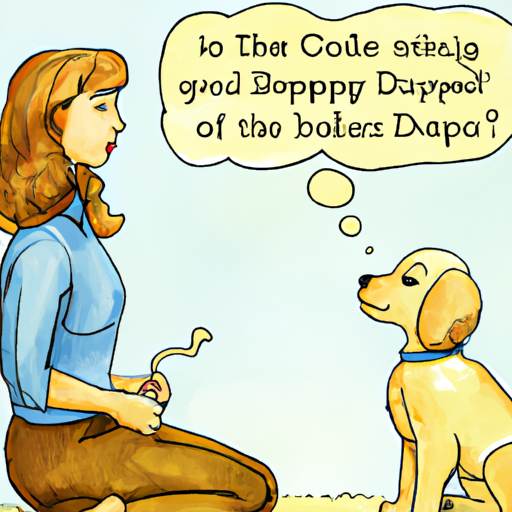Raising a puppy is a rewarding, albeit challenging, task. One key aspect of this journey is puppy discipline – teaching your young canine friend what behavior is acceptable and what isn’t. This guide will provide you with eight effective strategies for disciplining your puppy.
1. Setting Expectations
Firstly, it’s crucial to understand the purpose of discipline. It’s not about punishment, but about teaching.
- Remember, you’re teaching, not punishing. Puppies aren’t aware of our human rules, so it’s up to us to teach them in a manner they understand.
- Consistency is key. If you’re inconsistent, your puppy may get confused about what’s allowed and what isn’t.
2. Use Positive Reinforcement
Rewards are a powerful tool in discipline.
- Reward desirable behavior. When your puppy behaves well, give them a treat, pet them, or shower them with praise.
- Ignore unwanted behavior. Instead of punishing your puppy when they misbehave, ignore them. They’ll soon learn that good behavior earns them attention.
3. Say ‘No’ Correctly
It’s important to communicate your disapproval effectively.
- Use a firm, calm voice. Shouting or screaming can scare your puppy, which is counterproductive.
- Say ‘no’ immediately. Your puppy won’t understand why they’re being scolded if you do it too late.
4. Use Time-Outs
Like with children, time-outs can be an effective disciplinary tool.
| Step | Action |
|---|---|
| 1. | Calmly remove your puppy from the scene. |
| 2. | Place them in a quiet, safe space. |
| 3. | Leave them there for a few minutes. |
| 4. | Let them out when they’ve calmed down. |
5. Leash Training
A leash can be a helpful teaching tool.
- Introduce the leash early. Get your puppy accustomed to the leash as soon as possible.
- Use the leash to guide behavior. If your puppy starts to do something unacceptable, gently tug the leash to correct them.
6. Crate Training
A crate can be a safe space for your puppy and a useful disciplinary tool. Remember not to use it as a punishment, but rather as a way to manage behavior and create routine.
7. Seek Professional Help
If you’re struggling with puppy discipline, don’t hesitate to seek professional help. Dog trainers have the knowledge and experience to guide you and your puppy through this process.
8. Be Patient
Finally, remember that discipline takes time and patience. Puppies, like children, are learning and growing. It’s a process, so give them (and yourself) grace.
FAQs
Q: What should I do if my puppy bites me?
A: If your puppy bites, say “ouch” loudly to startle them and stop the interaction for a few seconds. This will teach them that biting leads to an end in playtime.
Q: Is it okay to tap my puppy on the nose as a form of punishment?
A: No, physical punishment can lead to fear or aggression. Instead, use positive reinforcement and other non-physical forms of discipline.
Q: How long will it take to discipline my puppy?
A: It varies depending on the puppy and the consistency of the training. It’s a process and might take several weeks or even months. Be patient and consistent.
Remember, disciplining a puppy isn’t about punishment. It’s about teaching them to become well-behaved adult dogs. With patience, consistency, and positive reinforcement, you and your puppy will navigate this journey successfully.



